Abstract
An epidemiological cohort study was conducted to investigate the mortality patterns among a group of workers engaged in the production of nitrate based fertilisers. This study was designed to test the hypothesis that individuals exposed to high concentrations of nitrates might be at increased risk of developing cancers, particularly gastric cancer. A total of 1327 male workers who had been employed in the production of fertilisers between 1946 and 1981 and who had been occupationally exposed to nitrates for at least one year were followed up until 1 March 1981. In total, 304 deaths were observed in this group and these were compared with expected numbers calculated from mortality rates in the northern region of England, where the factory was located. Analysis was also carried out separately for a subgroup of the cohort who had been heavily exposed to nitrates--that is, working in an environment likely to contain more than 10 mg nitrate/m3 for a year or longer. In neither the entire cohort nor the subgroup was any significant excess observed for all causes of mortality or for mortality from any of five broad categories of cause or from four specific types of cancer. A small excess of lung cancer was noted more than 20 years after first exposure in men heavily exposed for more than 10 years. That men were exposed to high concentrations of nitrate was confirmed by comparing concentrations of nitrates in the saliva of a sample of currently employed men with control men, employed at the same factory but not in fertiliser production. The men exposed to nitrate had substantially raised concentrations of nitrate in their saliva compared with both controls within the industry and with men in the general population and resident nearby. The results of this study therefore weight against the idea that exposure to nitrates in the environment leads to the formation in vivo of material amounts of carcinogens.
Full text
PDF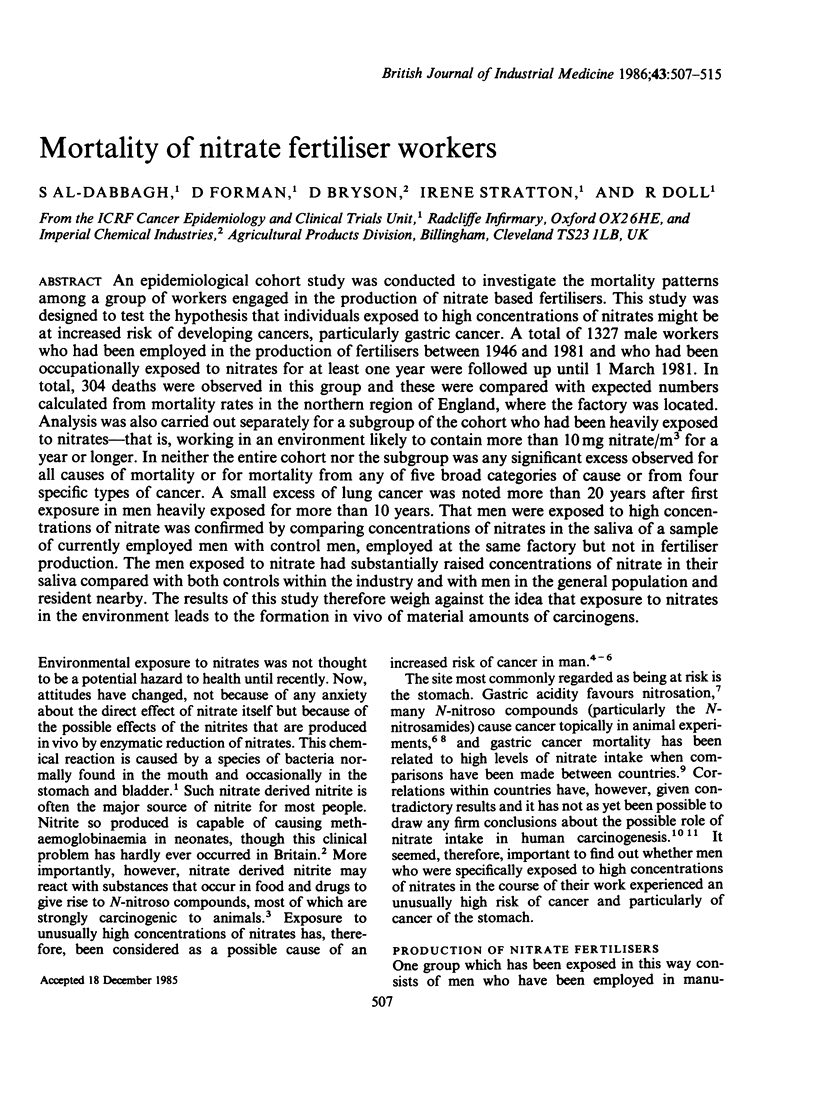
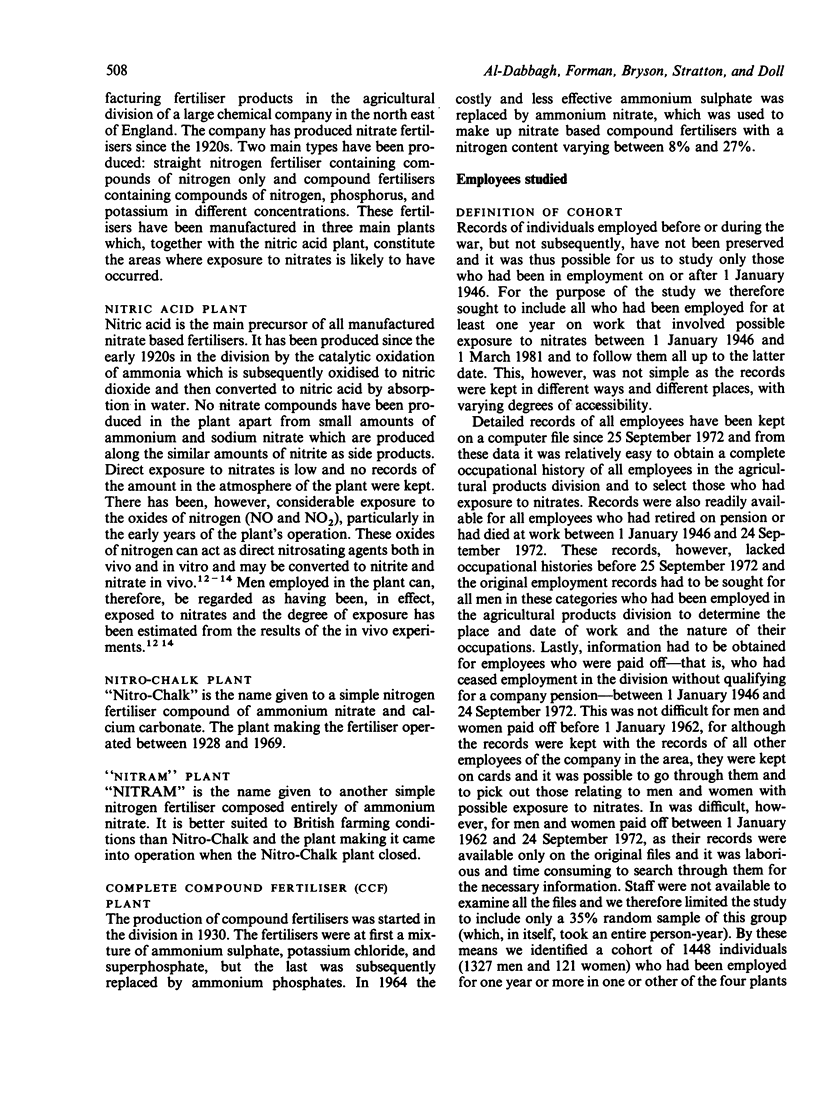
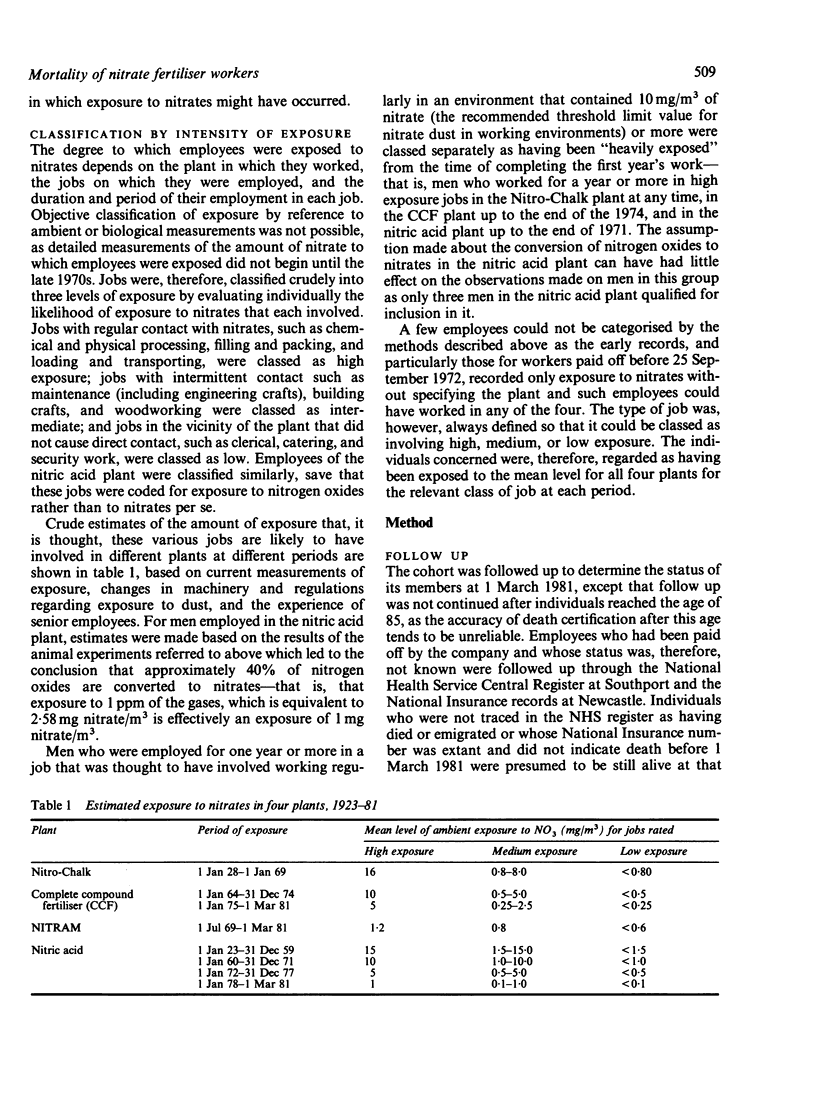
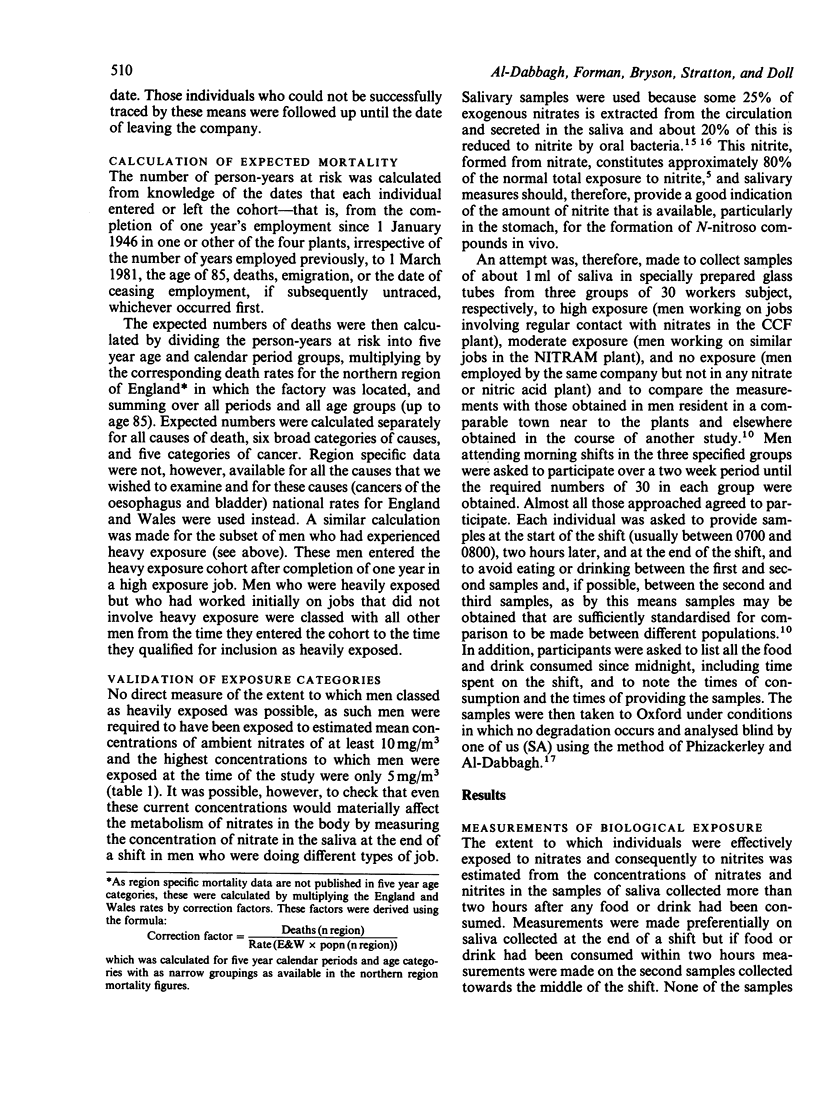
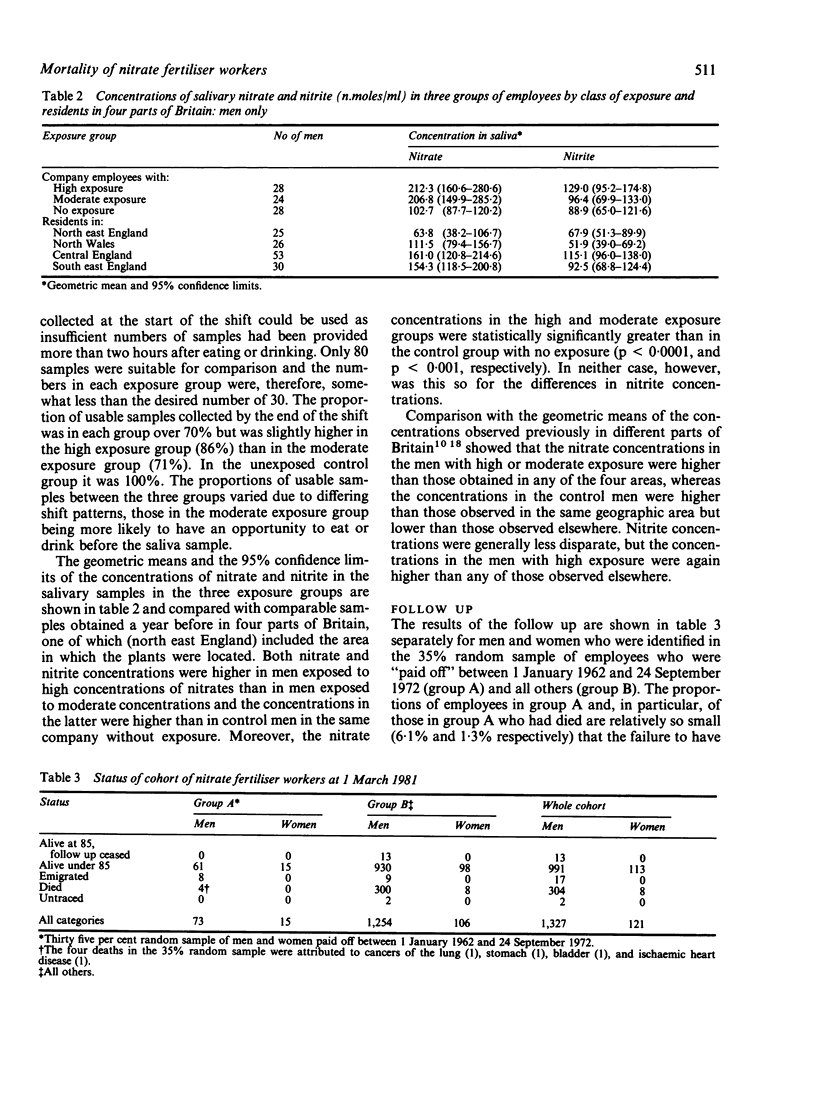
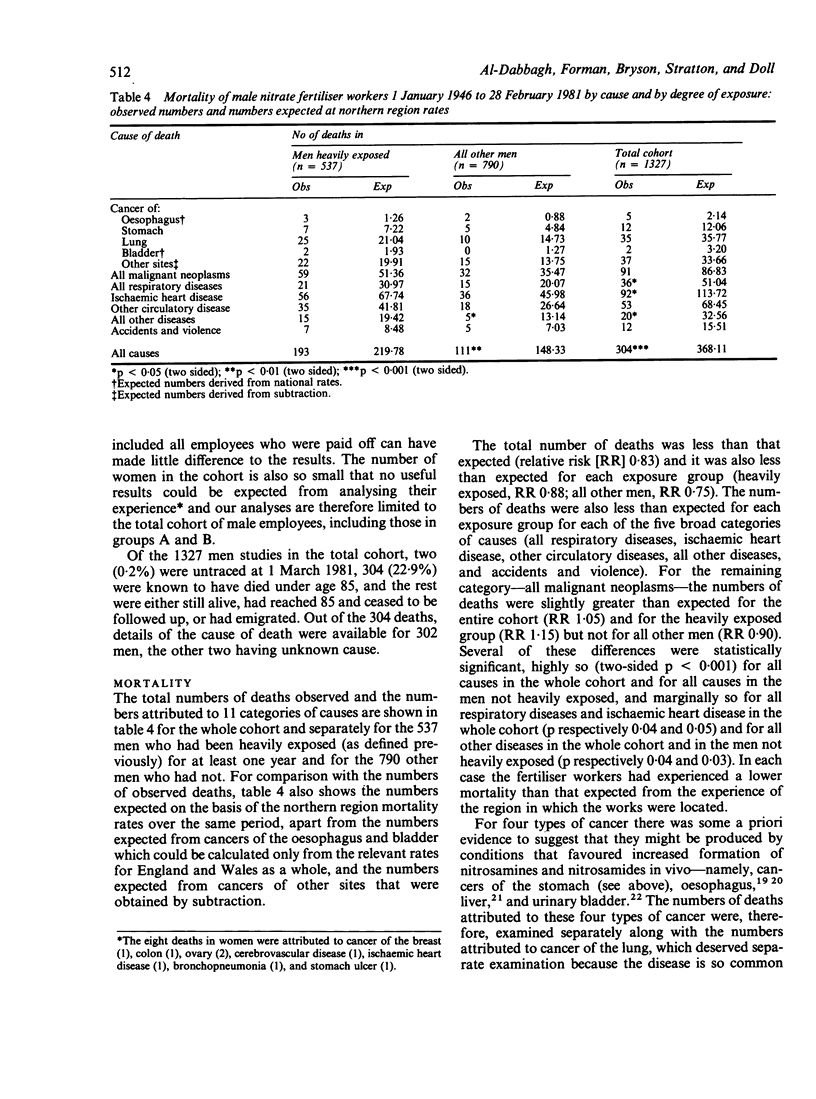
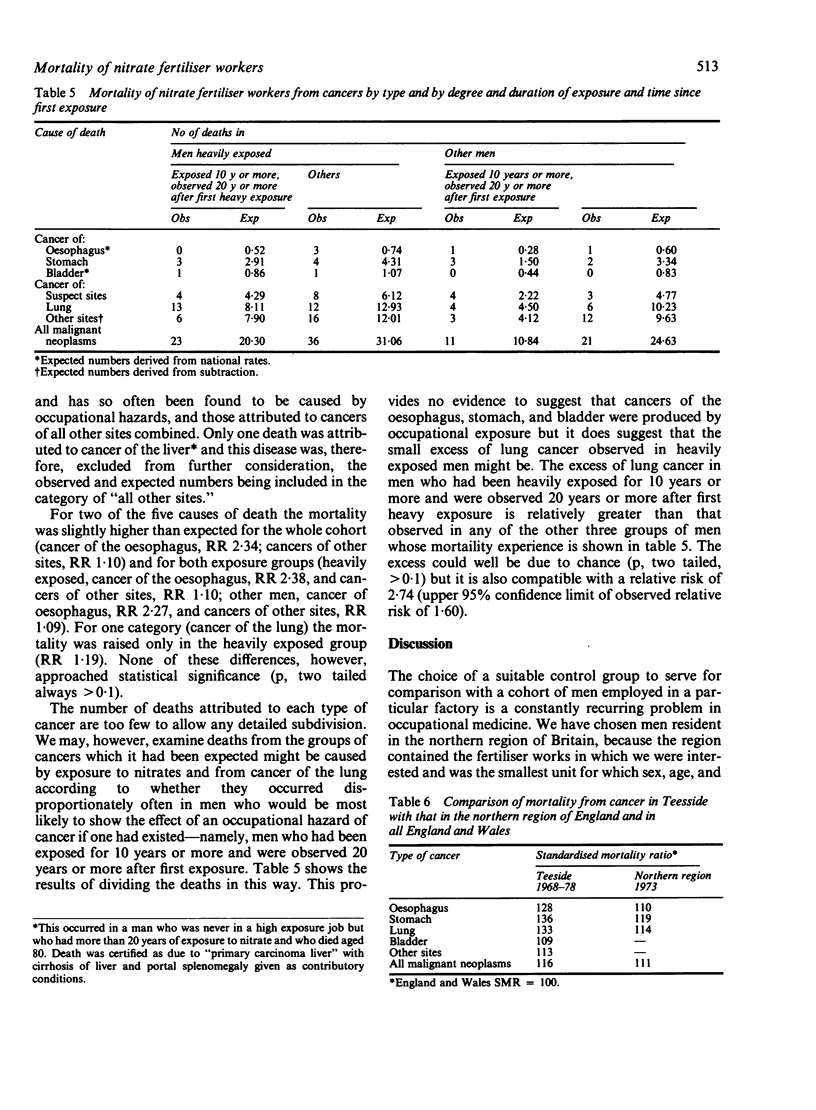

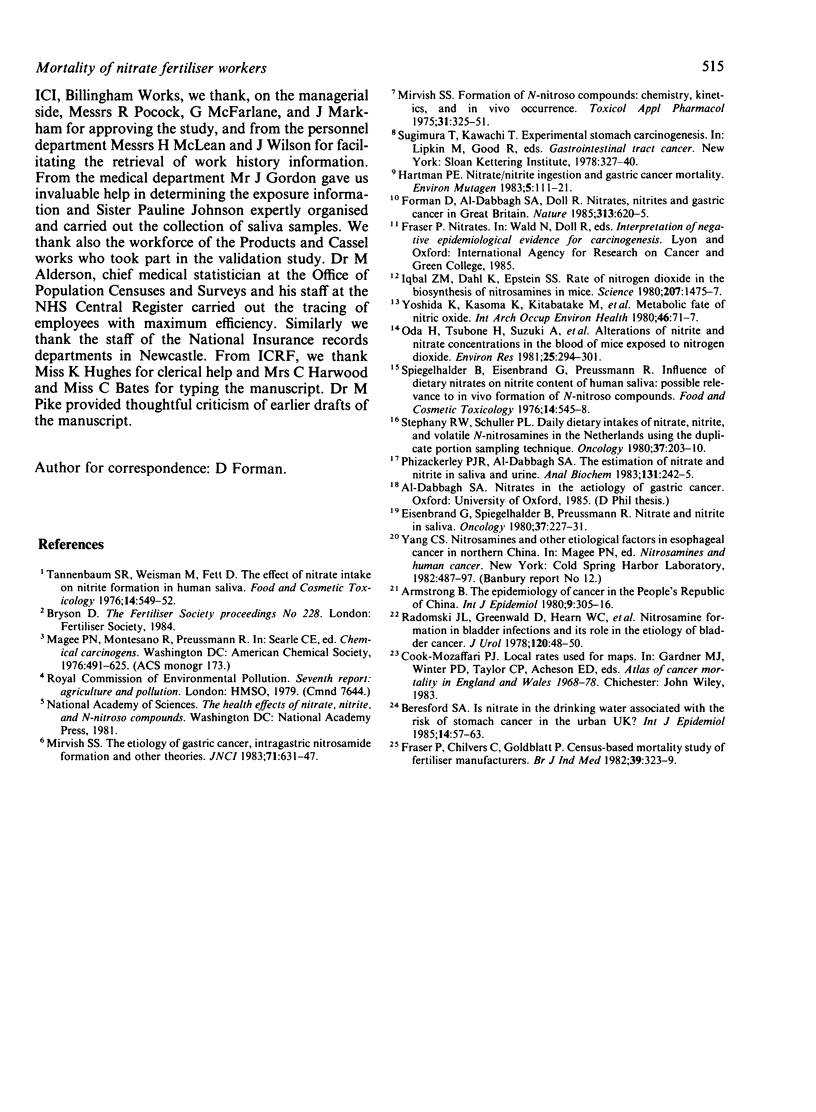
Selected References
These references are in PubMed. This may not be the complete list of references from this article.
- Armstrong B. The epidemiology of cancer in the Peoples Republic of China. Int J Epidemiol. 1980 Dec;9(4):305–315. doi: 10.1093/ije/9.4.305. [DOI] [PubMed] [Google Scholar]
- Eisenbrand G., Spiegelhalder B., Preussmann R. Nitrate and nitrite in saliva. Oncology. 1980;37(4):227–231. doi: 10.1159/000225441. [DOI] [PubMed] [Google Scholar]
- Forman D., Al-Dabbagh S., Doll R. Nitrates, nitrites and gastric cancer in Great Britain. Nature. 1985 Feb 21;313(6004):620–625. doi: 10.1038/313620a0. [DOI] [PubMed] [Google Scholar]
- Fraser P., Chilvers C., Goldblatt P. Census-based mortality study of fertiliser manufactures. Br J Ind Med. 1982 Nov;39(4):323–329. doi: 10.1136/oem.39.4.323. [DOI] [PMC free article] [PubMed] [Google Scholar]
- Hartman P. E. Review: putative mutagens and carcinogens in foods. I. Nitrate/nitrite ingestion and gastric cancer mortality. Environ Mutagen. 1983;5(1):111–121. doi: 10.1002/em.2860050112. [DOI] [PubMed] [Google Scholar]
- Iqbal Z. M., Dahl K., Epstein S. S. Role of nitrogen dioxide in the biosynthesis of nitraosamines in mice. Science. 1980 Mar 28;207(4438):1475–1477. doi: 10.1126/science.7361099. [DOI] [PubMed] [Google Scholar]
- Mirvish S. S. Formation of N-nitroso compounds: chemistry, kinetics, and in vivo occurrence. Toxicol Appl Pharmacol. 1975 Mar;31(3):325–351. doi: 10.1016/0041-008x(75)90255-0. [DOI] [PubMed] [Google Scholar]
- Oda H., Tsubone H., Suzuki A., Ichinose T., Kubota K. Alterations of nitrite and nitrate concentrations in the blood of mice exposed to nitrogen dioxide. Environ Res. 1981 Aug;25(2):294–301. doi: 10.1016/0013-9351(81)90031-1. [DOI] [PubMed] [Google Scholar]
- Phizackerley P. J., Al-Dabbagh S. A. The estimation of nitrate and nitrite in saliva and urine. Anal Biochem. 1983 May;131(1):242–245. doi: 10.1016/0003-2697(83)90161-6. [DOI] [PubMed] [Google Scholar]
- Radomski J. L., Greenwald D., Hearn W. L., Block N. L., Woods F. M. Nitrosamine formation in bladder infections and its role in the etiology of bladder cancer. J Urol. 1978 Jul;120(1):48–50. doi: 10.1016/s0022-5347(17)57035-4. [DOI] [PubMed] [Google Scholar]
- Spiegelhalder B., Eisenbrand G., Preussmann R. Influence of dietary nitrate on nitrite content of human saliva: possible relevance to in vivo formation of N-nitroso compounds. Food Cosmet Toxicol. 1976 Dec;14(6):545–548. doi: 10.1016/s0015-6264(76)80005-3. [DOI] [PubMed] [Google Scholar]
- Stephany R. W., Schuller P. L. Daily dietary intakes of nitrate, nitrite and volative N-nitrosamines in the Netherlands using the duplicate portion sampling technique. Oncology. 1980;37(4):203–210. doi: 10.1159/000225437. [DOI] [PubMed] [Google Scholar]
- Tannenbaum S. R., Weisman M., Fett D. The effect of nitrate intake on nitrite formation in human saliva. Food Cosmet Toxicol. 1976 Dec;14(6):549–552. doi: 10.1016/s0015-6264(76)80006-5. [DOI] [PubMed] [Google Scholar]
- Yoshida K., Kasama K., Kitabatake M., Okuda M., Imai M. Metabolic fate of nitric oxide. Int Arch Occup Environ Health. 1980;46(1):71–77. doi: 10.1007/BF00377461. [DOI] [PubMed] [Google Scholar]


